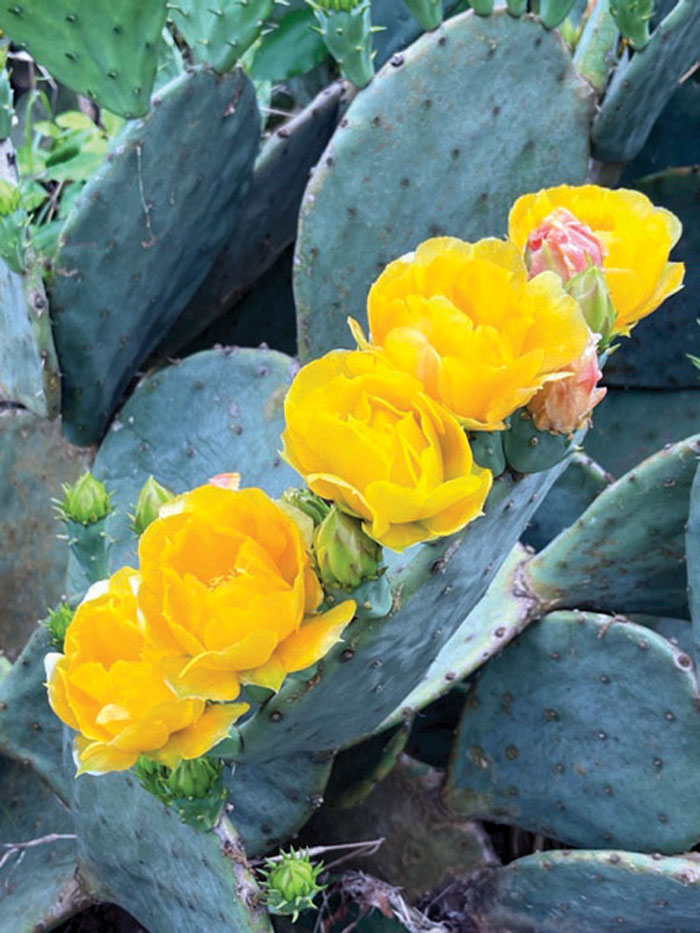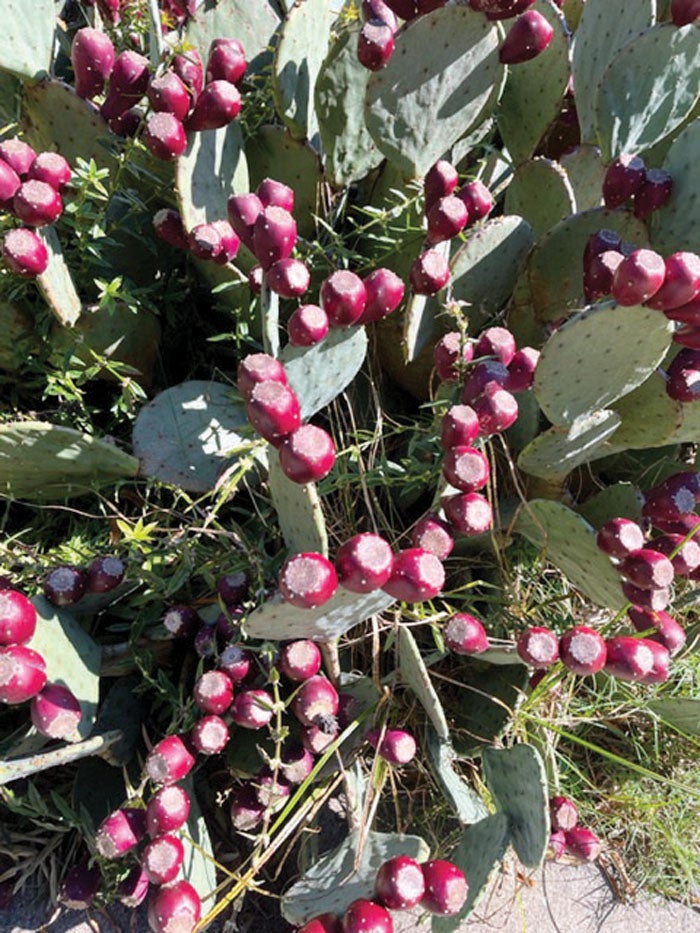Darrell Blackwelder: Prickly pear cactus is an interesting plant
Published 12:00 am Saturday, October 29, 2022

- Cactus bloom
My wife and I visited her cousin, Penny, a few weeks ago and were amazed at an enormous cactus she had in landscape. It was an eastern prickly pear cactus measuring about 100 square feet, loaded with large, purple fig-shaped fruit. Her mother brought her a cutting 20 years ago and it continues to enlarge over the years.
When considering planting a cactus, one often thinks of desert growing conditions. However, this species is from a large family of over 150 species (Opuntia) that can adapt to weather from New Mexico to Florida and up into Massachusetts. Being a true cactus, these plants prosper in well-drained soils with full sunlight. Prickly pear cacti have some rather unique physical characteristics. The stems or leaf pads of the plant absorb sunlight and act as leaves producing nutrients for growth.
This species’ cells contain a special type of substance that allows the plant to survive typical winter weather in our area. Early in the spring, it produces a rather colorful display of yellow blooms covering the leaves. In other growing areas, particularly up north, the blooms are often red and orange. Both the leaves and fruit of the cactus are edible and are often found in specialty grocery stores. Penny, the plant’s owner, provided me a pint of prickly pear cactus jelly her daughter made, which was excellent!
Prickly pear cacti are interesting plants, but be aware — the name is quite descriptive. These plants have extremely sharp, minute, almost invisible needle-like thorns on all parts of the plant including the fruit. So, be aware when you, children or pets are near the plant. I can vouch for the fact that the prickly thorns are miserable and almost impossible to remove.
Darrell Blackwelder is the retired horticulture agent and director with the North Carolina Cooperative Extension Service in Rowan County. Contact him at deblackw@ncsu.edu.




